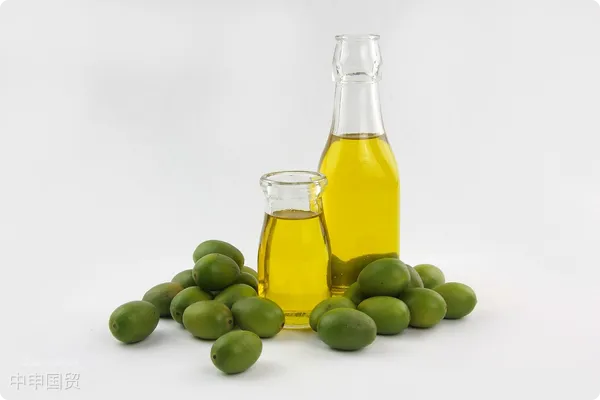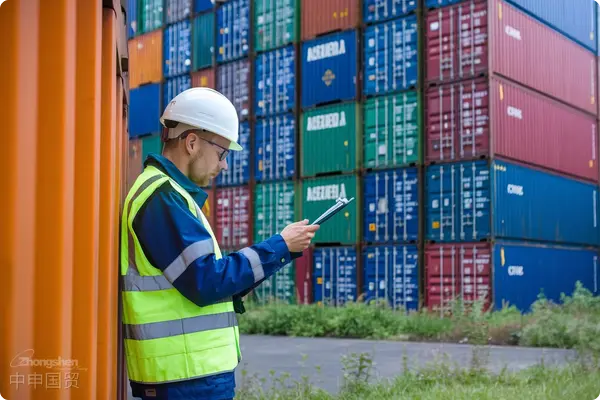- Shanghai Zhongshen International Trade Co., Ltd. - Two decades of trade agency expertise.
- Service Hotline: 139 1787 2118
In todays pursuit of healthy diets, olive oil, as a representative of high - quality edible oils, has its quality and safety standards highly concerned by consumers. The EUs latest move, by revising the sensory evaluation methods and trade standards for virgin olive oil, has set a new benchmark for the global olive oil market.

I. Background and Overview of the Revision Content
The EU has always been committed to ensuring food quality and safety, especially in the high - demand food sector of virgin olive oil. On May 8, 2024, the Official Journal of the European Union announced that a decision would be adopted during the 119th session from June 18 to 25, 2024, to revise the trade standards applicable to olive oil and olive - pomace oil, and update the sensory evaluation methods and analytical procedures for virgin olive oil. This move aims to enhance the quality control of olive oil and ensure that consumers obtain high - quality products.
(1) Sensory Evaluation Method
The revised sensory evaluation method is specifically applicable to virgin olive oil, which is classified according to the perceived defect intensity and fruitiness. This method not only provides a scientific basis for the classification of the oil but also guides the labeling of optional labels.
Classification of Oil
Virgin olive oil will be divided into different grades, such as extra - virgin olive oil, according to the median of defects. This classification method ensures that consumers can choose products based on clear quality standards.
(2) Labeling Requirements
The revised labeling requirements include the following aspects:
(1) Country of Origin: The country of origin of the olive oil must be indicated. If the product has been substantially processed in another country, then the country where the processing was carried out shall be considered as the country of origin on the label.
(2) Name of Origin: The label of extra - virgin olive oil may indicate its name of origin (country or region). When a product is granted a name of origin, it must comply with the regulations of the country of origin, and the oil must be produced, packaged, and originated only in that country.
(3) Batch Identification: Each container must be embossed or permanently marked with a code or in a transparent manner to identify the production factory and batch information.
(3) Analytical and Sampling Methods
The revised analytical methods include the determination of fatty acid composition and trans - fatty acid content by gas chromatography. This improved analytical method ensures the quality and safety of olive oil, ensuring that it meets strict health standards through scientific means.
II. Practical Impact and Implementation of the Revision
(1) Improve Quality Control
This revision will greatly improve the quality control level of virgin olive oil. Through more scientific and accurate sensory evaluation methods, producers can classify products more accurately, ensuring that the information on each label can truly reflect the quality of the product.
(2) Enhance Consumer Trust
The new labeling requirements and batch identification measures will significantly enhance consumers trust in products. Clear origin identification and batch traceability capabilities enable consumers to purchase and use virgin olive oil with more confidence, reducing the risk of purchasing counterfeit and shoddy products.
(3) Standardization of International Trade
Through improved analytical methods and strict labeling regulations, EU olive oil products will be more easily recognized in the international market. This not only helps to protect the reputation of European olive oil but also contributes to promoting its competitiveness in the global market.
III. Countermeasures and Future Outlook
(1) Producers Response Strategies
Producers need to quickly adapt to the new regulations and ensure that all products meet the new sensory evaluation and labeling requirements. Specific measures include:
(1) Employee Training:Train employees on the new standards to ensure that they understand and can correctly implement the new sensory evaluation methods and analytical techniques.
(2) Equipment Updating:Invest in updating laboratory equipment, especially the instruments used for gas chromatography analysis, to ensure the accuracy and consistency of the determination results.
(3) Supply Chain Review:Re - review the supply chain to ensure that all raw materials and production processes meet the requirements of the new regulations, especially for the identification of the place of origin and processing.
(2) Role of Governments and Regulatory Agencies
Governments and regulatory agencies need to actively promote the implementation of the new regulations to ensure that all producers and importers understand and comply with the new regulations. Specific measures include:
(1) Promotion and Publicity:Publicize the content and importance of the new regulations to producers and importers through various channels.
(2) Inspection and Supervision:Strengthen the inspection and supervision of olive oil products on the market to ensure that products meet the new standards.
(3) Technical Support:Provide technical support to producers to help them solve the problems encountered in the implementation of the new regulations.
(3) Consumer Education
Consumer education is also crucial. By popularizing knowledge of the new regulations, consumers can better understand the label information and make more informed purchasing decisions.
The EUs move to revise the sensory evaluation methods, classification procedures, and trade standards for virgin olive oil is an important step in improving the quality of olive oil products and consumer trust. Through strict quality control and labeling requirements, it ensures that consumers obtain high - quality olive oil products. At the same time, this move will also promote the competitiveness of EU olive oil in the international market, providing more reliable and high - quality products for global consumers.
Related Recommendations
? 2025. All Rights Reserved. 滬ICP備2023007705號-2  PSB Record: Shanghai No.31011502009912
PSB Record: Shanghai No.31011502009912









